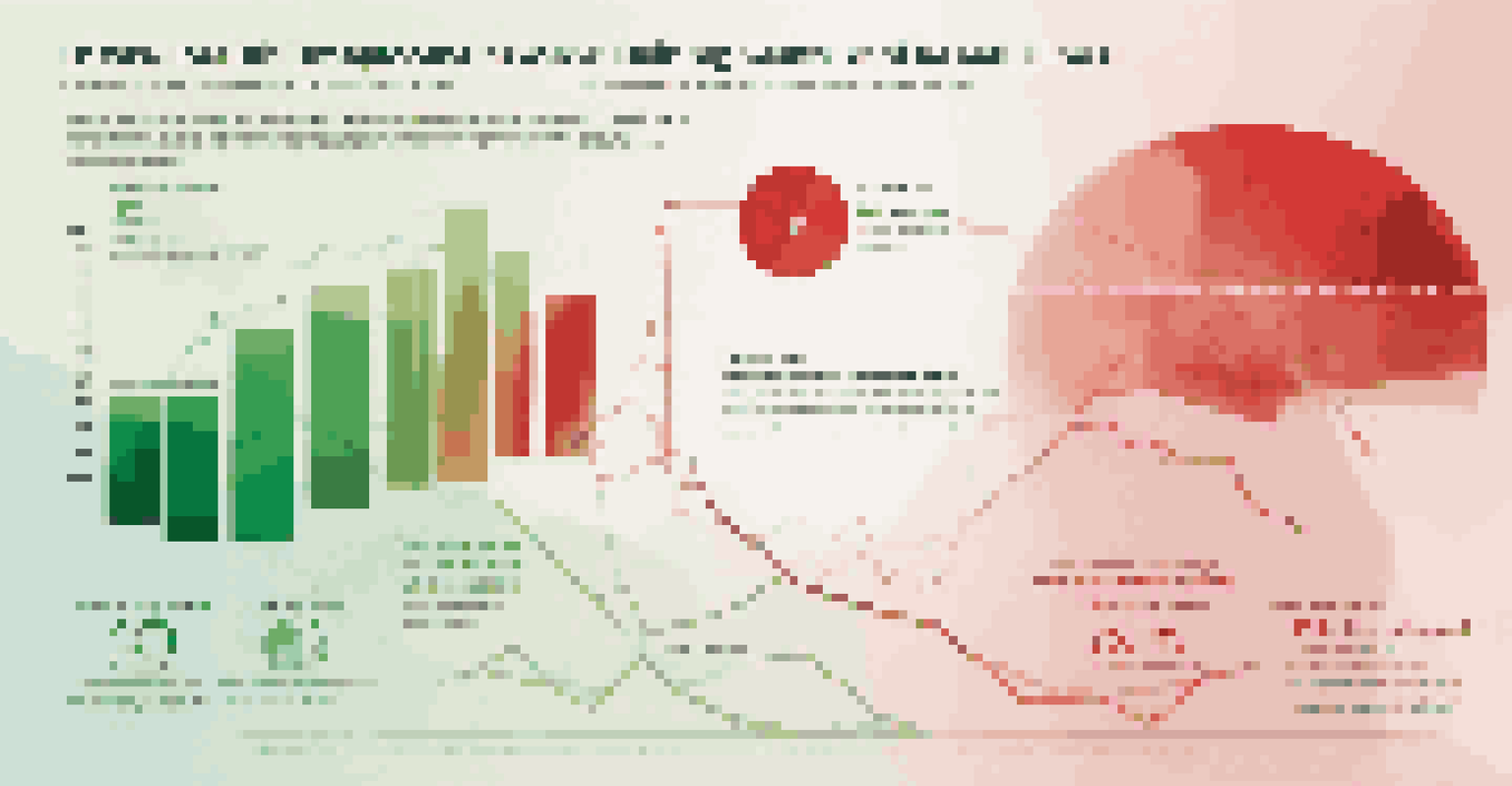The Role of Economic Factors in Job Market Research

The Impact of Economic Growth on Job Availability
Economic growth is a crucial driver of job creation. When an economy expands, businesses often increase their operations, leading to more job openings. For instance, during periods of economic boom, sectors like technology and healthcare frequently see a surge in hiring.
Economic growth is not just about numbers; it’s about people getting jobs and improving their lives.
Conversely, during economic downturns, companies may freeze hiring or implement layoffs, directly affecting job availability. This cyclical nature of the economy means that job seekers must stay informed about economic trends to understand their impact on the job market.
Thus, analyzing economic growth indicators, such as GDP, can provide valuable insights for job market research. A growing economy often signals a vibrant job market, while a contracting economy can indicate challenges for job seekers.
Understanding Unemployment Rates and Their Significance
Unemployment rates serve as a key indicator of economic health and job market dynamics. A high unemployment rate often suggests that there are more job seekers than available positions, which can lead to increased competition for jobs. This is crucial information for job market researchers when analyzing trends and projections.

On the other hand, a low unemployment rate typically indicates a robust job market where employers may struggle to find qualified candidates. This scenario can shift the balance of power towards job seekers, allowing them to negotiate better terms.
Economic Growth Fuels Job Creation
As economies expand, businesses often hire more, creating numerous job opportunities.
By closely monitoring unemployment rates, researchers can gauge the overall health of the job market and identify sectors that may be hiring more aggressively. This data can empower job seekers to focus their efforts on industries that are thriving.
Inflation and Its Effects on Wages and Employment
Inflation, the rate at which prices for goods and services rise, can have a significant impact on wages and employment opportunities. As costs increase, workers often demand higher wages to maintain their standard of living, which can influence hiring practices across various industries.
The future of work is not about jobs being replaced by technology, but rather about how technology can enhance human potential.
For example, if inflation rises sharply, businesses may face pressure to raise salaries, but they might also reduce their workforce to cut costs. This creates a delicate balance for employers who must navigate the challenges posed by rising expenses while trying to attract and retain talent.
Job market research must, therefore, consider inflation trends, as they directly affect both employer hiring decisions and employee expectations. Understanding this relationship can help job seekers better position themselves in a fluctuating market.
The Role of Government Policies in Shaping Employment
Government policies play a crucial role in shaping the job market, affecting everything from taxation to labor laws. For instance, initiatives aimed at boosting small businesses can lead to increased hiring, while strict regulations may hinder job creation in certain sectors.
Policies such as minimum wage laws can also impact employment levels, as they set a baseline for worker compensation. If set too high, some businesses may reduce hiring or eliminate positions to manage labor costs.
Unemployment Rates Reflect Market Health
High unemployment rates indicate fierce competition for jobs, while low rates suggest a thriving job market.
By analyzing government policy changes and their implications, job market researchers can better understand shifts in employment trends. This knowledge can help job seekers navigate the landscape and identify sectors that are expanding or contracting based on policy influences.
Global Economic Trends and Their Local Impact
In today's interconnected world, global economic trends can significantly affect local job markets. For example, fluctuations in international trade can lead to job losses in export-driven industries, while growth in emerging markets may create new opportunities.
Moreover, events such as economic crises or booms in major economies can have ripple effects worldwide. Local job seekers need to be aware of these global dynamics to understand potential impacts on their job prospects.
Researching global economic indicators, such as trade balances or foreign investment trends, allows job market analysts to predict local employment shifts. This insight can be invaluable for both job seekers and employers alike.
Technological Advances and Their Influence on Job Markets
Technological advancements are reshaping the job market in profound ways. Automation and artificial intelligence are not only changing the types of jobs available but also how work is performed. For instance, roles that involve repetitive tasks are increasingly being automated, leading to a decline in demand for such positions.
At the same time, technology creates new job opportunities in fields like data science, cybersecurity, and software development. Job market researchers must stay attuned to these changes to provide accurate insights into which skills will be in demand.
Tech Advances Change Job Landscape
Technological innovations not only automate certain jobs but also create new opportunities in emerging fields.
Ultimately, understanding technological trends is vital for job seekers aiming to adapt to the evolving market landscape. By focusing on acquiring relevant skills, individuals can better position themselves for success in a tech-driven economy.
The Importance of Demographic Trends in Employment Research
Demographic trends, such as age, education levels, and migration patterns, significantly influence the job market. For example, an aging population may lead to increased demand for healthcare services, while younger generations might drive growth in tech-related fields.
Additionally, shifts in education levels can affect the types of jobs available and the skills employers prioritize. As more individuals attain higher education, competition for skilled positions intensifies, necessitating continuous learning and upskilling.

By analyzing demographic data, researchers can identify emerging trends and better understand the evolving needs of the job market. This information is essential for job seekers looking to align their skills with market demands.